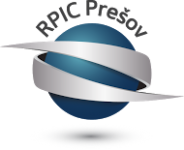Summary:
A Slovenian public research organization has developed a method for assessing the state of spent-fuel facilities at nuclear power plants. The method provides superior accuracy over the state-of-the art techniques that rely on measuring water-level elevation. Critical water levels and the need for evacuation can be more reliably estimated increasing the security of the site and the personnel during an extreme event.
Partners are sought for licensing and technical cooperation agreements.
Description:
In the course of the Fukushima accident, there were concerns raised about the safety of the spent fuel. This concern was further justified by the very short grace period available in high-density fuel pools if the active cooling gets interrupted or the integrity of the shell is compromised.
An interruption of the cooling in the course of an extreme event such as an earthquake could lead to unacceptably high and possibly fatal radiation levels in the vicinity of the spent-fuel facility. An identified damage of the spent-fuel facility would require an immediate response from the operating staff, possibly working short of reliable data required to establish an optimal intervention strategy.
Currently, the methods that allow to characterize the rupture and to forecast the development of coolant level elevation in the spent-fuel pool are based on measuring the change of the coolant level. While current approaches allow predicting the cause and development of the extreme event, the prediction techniques achieve only relatively poor accuracy.
Other techniques that calculate the time for water to reach its boiling point and evaporate or leak due to a rupture in the spent-fuel pool presuppose a rupture with a known location and size. In an extreme event locating and measuring the size of a rupture or crack may be impossible or at least impractical.
The offered method of assessing the state of the spent-fuel facility comprises measuring leakage of coolant and forecasting the development of coolant level elevation. Based on water-level monitoring during a given nuclear event, the rupture is characterized in terms of the mean cross-section and the elevation of the crack, while the water-level elevation is predicted for the period after the initiating events.
Spent-fuel facilities are usually equipped with a collecting dyke located underneath and such collecting dykes already have means to measure the amount of leakage and could readily be equipped with flow meters. Hence, the method can be implemented in conventional facilities without requiring major modifications to the site.
Also, measuring a radiation level alongside the leakage of coolant allows to significantly enhance the reliability of the forecast.
Temperature and the expected or estimated evaporation rate is also considered.
An important advantage of this method is related to the instant calculation of the crack characteristics. In the eventual case of compromised integrity of the shell, cracks are very difficult if not impossible to examine in a due time unless they are obtained indirectly.
The researchers come from a Slovenian public research organization. The authors have years of experience in operating nuclear reactors. They implemented the method in the form of a computer program and commercially available sensors connected via data links. The partners are sought among nuclear plants operators to integrate the software and any required measuring devices into their facilities based on:
• Technical cooperation agreements for implementation of the method at the partner’s site.
• Licensing agreements: licensing rights to the patent.
Type (e.g. company, R&D institution…), field of industry and Role of Partner Sought:
Partners are sought amongst nuclear power plant operators and equipment manufacturers. A partner’s role would be to implement the method and algorithms based on:
• Technical cooperation agreements for implementation of the method at the partner’s site.
• Licensing agreements: licensing rights to the patent.
Stage of Development:
Concept stage
IPR Status:
Granted patent or patent application essential
External code:
TOSI20200723001








